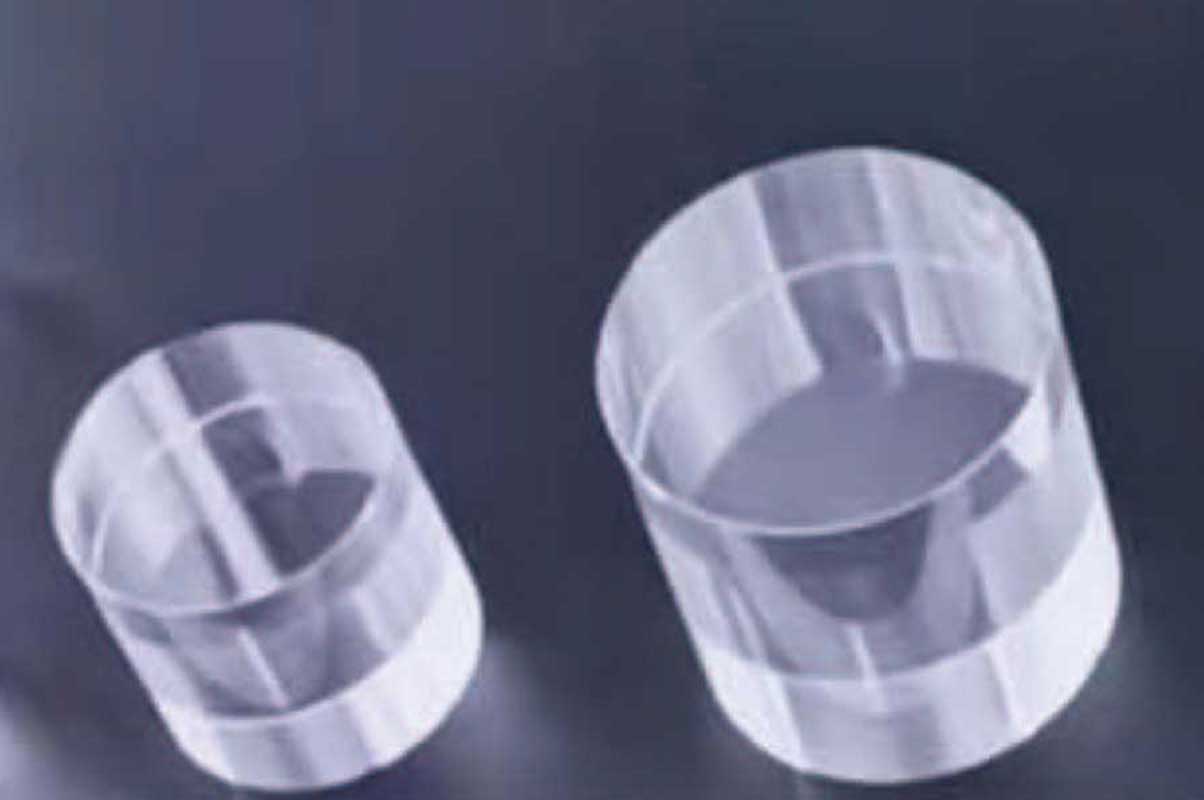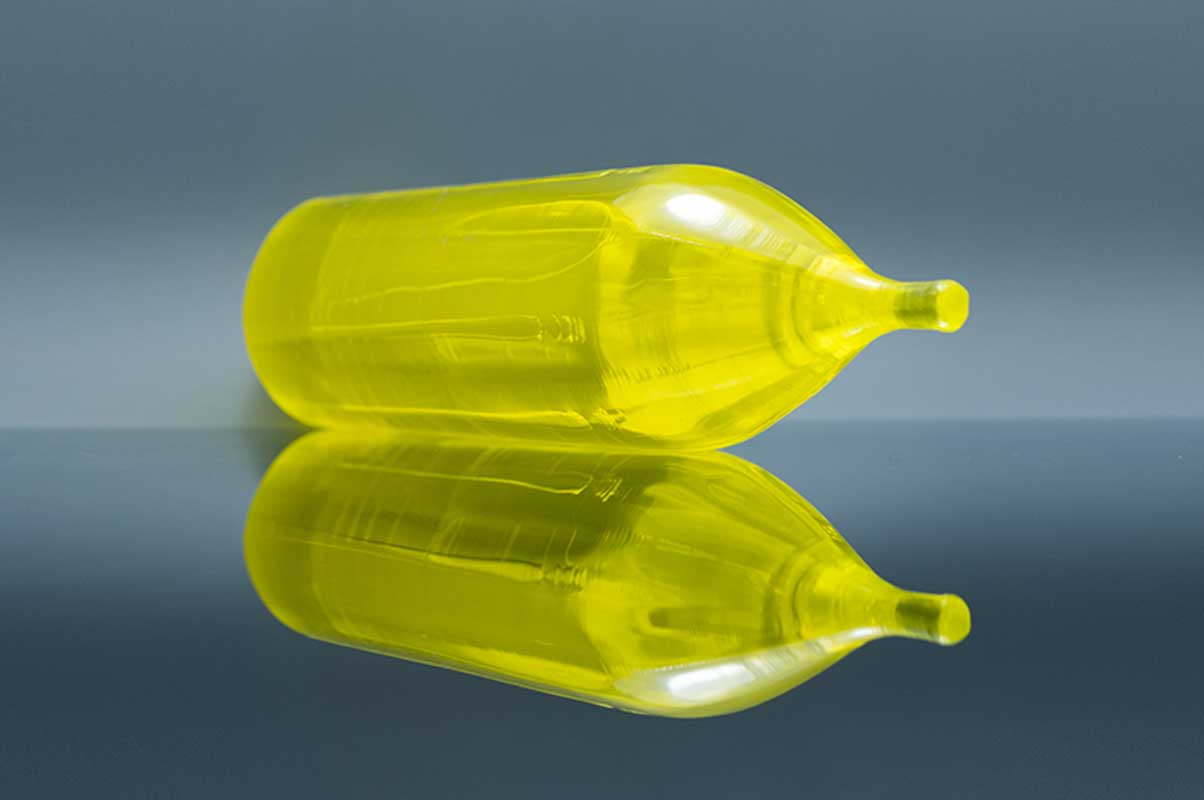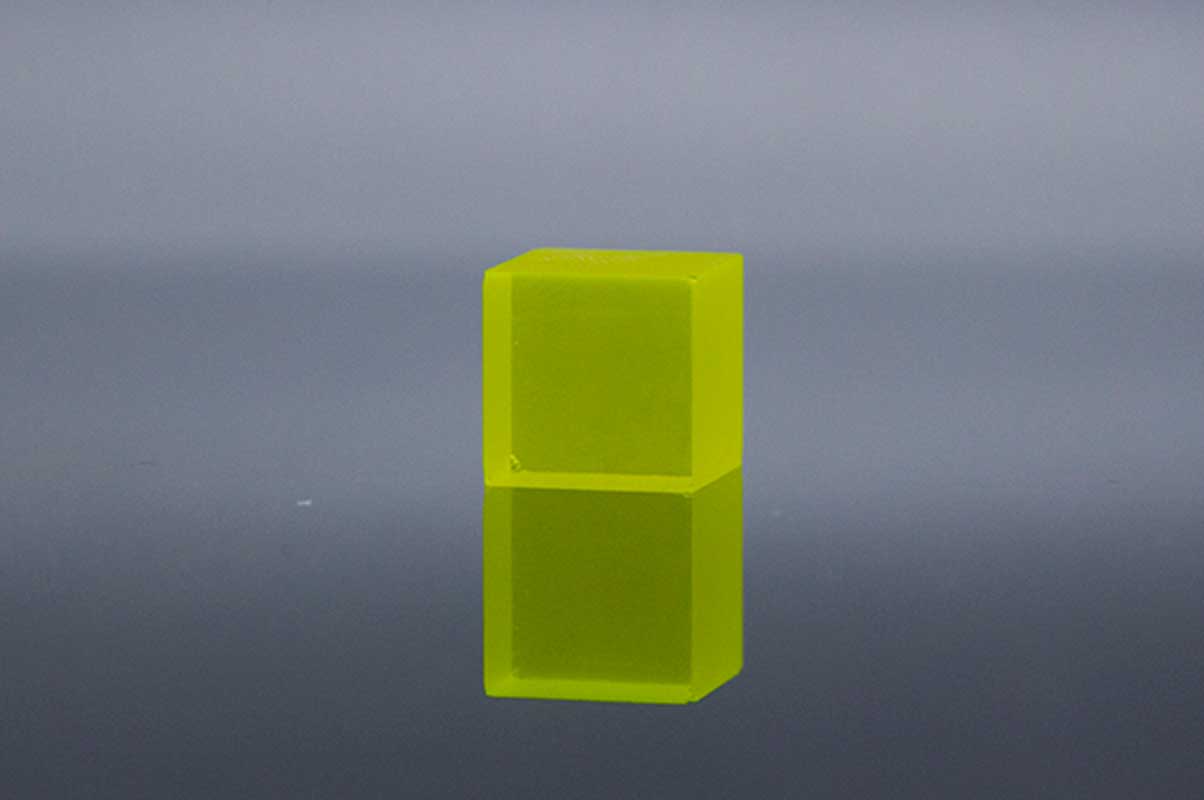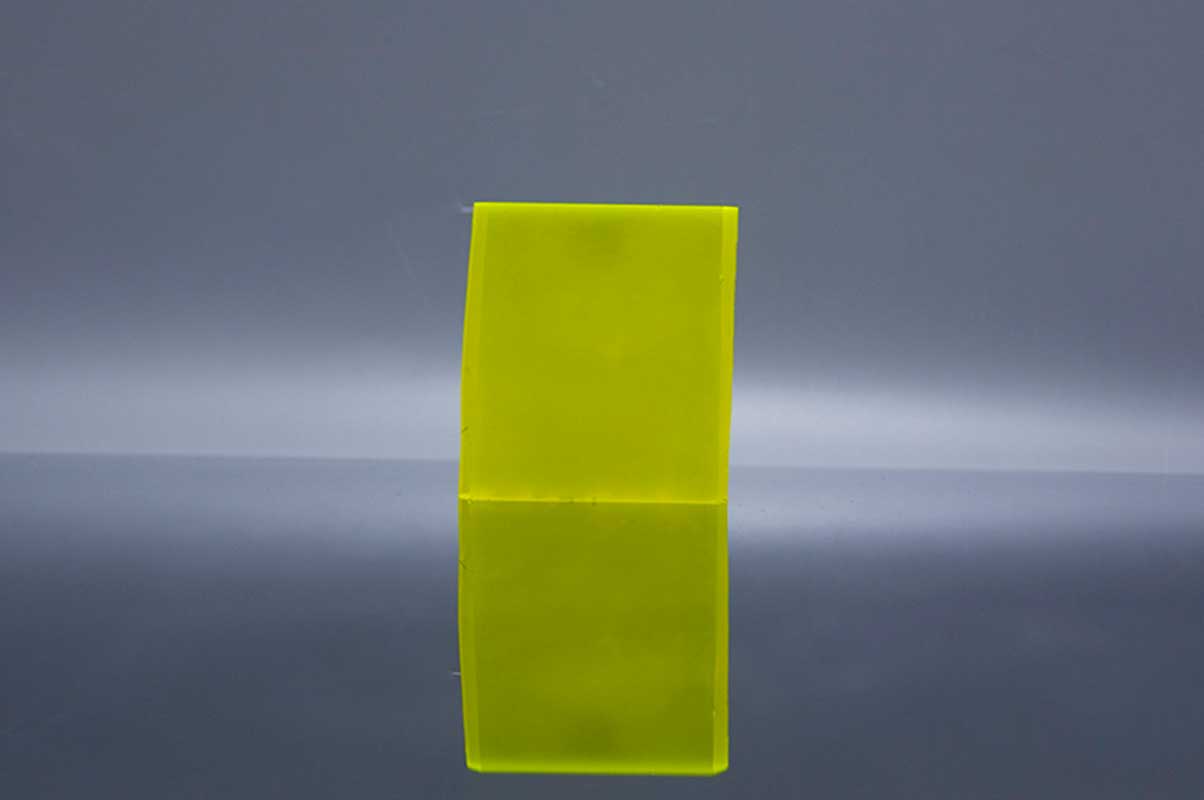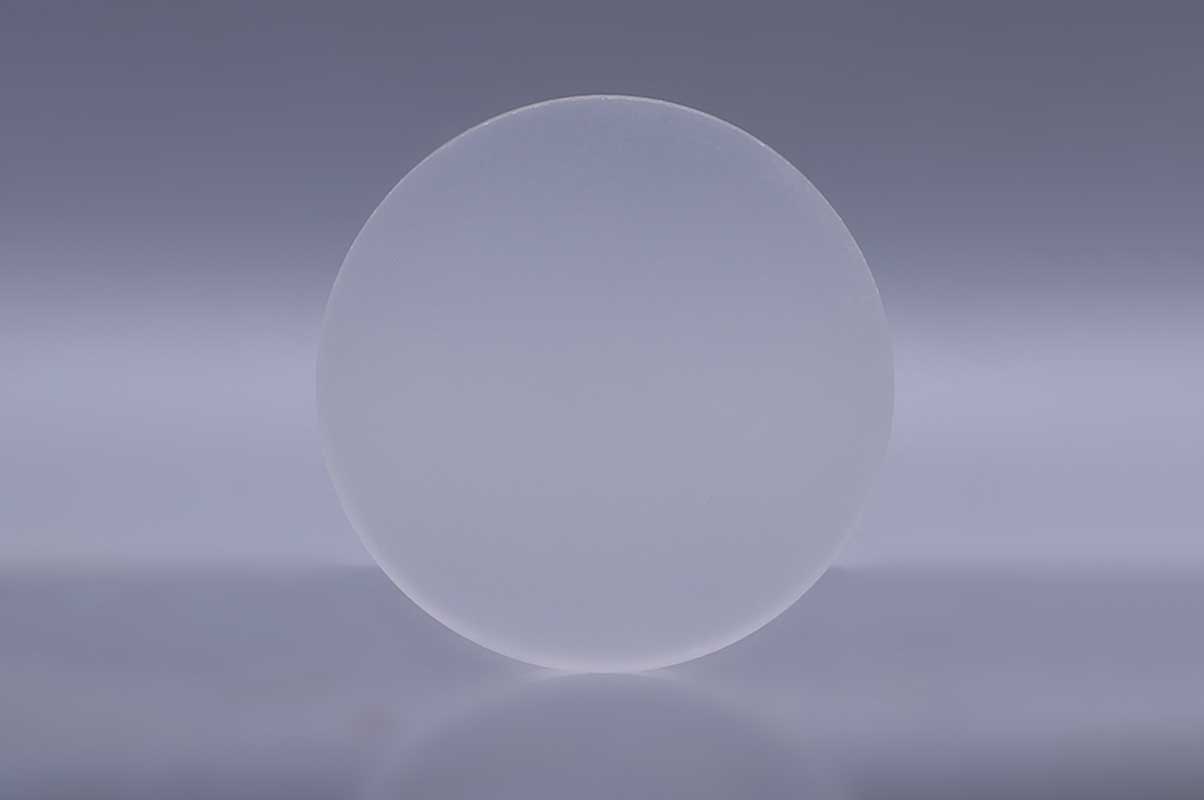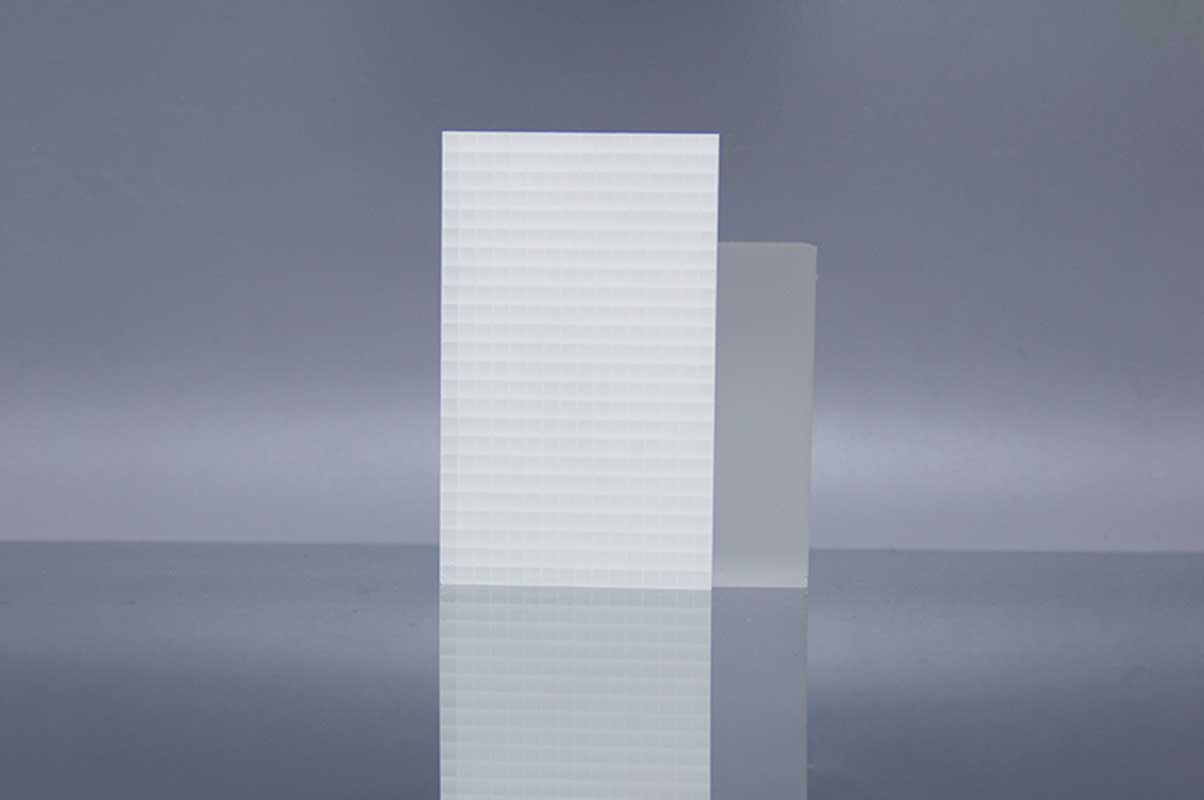γ-ray detection
Firstly, the gamma ray detector first has the function of a general detector, recording the energy loss of the secondary electrons in the detector; secondly it is a conversion medium that converts the incident photon energy into one or more fast electronic. The scintillator detector is mainly a radiation detector composed of scintillator, light collecting parts and photoelectric conversion devices. This traditional scintillation detector, characterized by high efficiency, high signal-to-noise ratio and fast response time, has been widely used in the research of high-energy physics, cosmic ray detection and nuclear medicine, and is an indispensable means in the field of radiation detection technology.
The ideal scintillator should have the following characteristics: high luminous efficiency, short decay time, low afterglow, high density, short radiation length, low cost, luminescence spectrum matching with the photon detector response spectrum. The length of radiation determines the absorption capacity of the scintillator to gamma photons. The wavelength of luminescence peak is the wavelength at the strongest emission spectrum of the scintillator, and the light output is the number of photons generated after the ray loses unit energy in the scintillator crystal, which directly affects the energy resolution of the detector. The decay time determines the maximum counting rate of scintillator.
The following figure shows the basic structure of the detector for the gamma ray detection. The basic detection unit in the figure is a pair of photon detectors (PMT/APD/SiPM, etc) coupled with scintillation crystals. Position readout circuit is the part of processing and calculating the output signal of the detector, which directly affects the output performance of the detector, so it is an indispensable part of the composition of the detector.

According to the reports, many crystals have been proven to act as scintillation crystals which can be applied gamma ray detection. At the moment, scintillation crystals that can be mass produced are: BGO、Ce:LYSO、Ce:GAGG、BaF2、Ce:LuAG、Ce:YAG、CsI(TI).
Scintillation crystals for γ-ray detection
BGO
- High density
- High effective atomic number
- Short radiation length
- High detection efficiency
- High braking force · Excellent energy resolution
Bismuth germanate Bi4Ge3O12 (BGO) crystal scintillation has attracted much attention because of its high ability to block soft gamma rays. BGO scintillators are attractive materials for gamma-ray detection due to their high detection efficiency, large light fraction and relatively low cost. The peak emission wavelength of BGO is -480 nm, which matches the spectral response of the photomultiplier tube very well. BGO has an effective atomic number of 75 and a density of 7.1g/cm3, which can improve the efficiency of detecting 511 keV γ photons by minimizing the radiation dose received by the subject and shortening the imaging time. The radiation length of the BGO is 1.12cm, which facilitates the production of compact detectors or probe components, improving spatial resolution and saving costs.
At present, many research institutions cooperate with BGO to use other scintillation crystals, which can maximize the advantages of BGO and overcome its disadvantages of low output light yield and long decay time. The BGO is primarily used as an active shield because of the large number of individual BGO crystals available, which allows us to construct lighter weight detectors, which are essential for the development of space gamma ray detectors. In addition, BGO crystal has no afterglow, no dissociation surface, strong resistance to irradiation, stable chemical properties, easy to process and maintain.
| BGO | Density (g/cm3) | Effective atomic number | Emission wavelength (nm) | Energy resolution (662keV γ rays) | Decay time (ns) |
| Ref[1] | 7.13 | 74 | 480 | 6.20% | 300 |
| Ref[2] | 7.13 | / | 480 | 11.5% | 300 |
| Ref[3] | 7.1 | 74 | 480 | 16.5% | 300 |
References
[1] BGO readout with photodiodes as a soft gamma-ray detector at -30 C
[2] The Comparison of Large Scintillators for High Energy Gamma-Rays Detection
[3] Comparative studies of CsI(Tl), LYSO and BGO scintillators
Ce:YAG
| Wavelength (Max. Emission) (nm) | 550 |
| Decay time (ns) | 70 |
| Light yield (Photons/kev) | 35 |
| Refractive index | 1.82@550nm |
| Radiation length (cm) | 3.5 |
With the increasing number of medical, industrial and scientific applications, there is increasing interest in the development of novel scintillation materials. Ce:YAG (Ce:Y3Al5O12) scintillation crystal has the advantages of high light output, fast time response, high gamma ray detection efficiency, stable physical and chemical properties, good coupling between fluorescence spectrum and common photosensitive devices, etc., which is very suitable for pulse gamma ray measurement. Ce:YAG single crystals have been reported as fast oxide scintillators in the literature. The density of Ce:YAG is about 4.56 g/cm3 and the effective atomic number is 35. The emission peak is near 550nm, which is well matched with the sensitive receiving wavelength of photomultiplier tube (PMT) and silicon photodiode (PD).
Ce:YAG crystals can be used for charged particles and X-ray/low-energy rays, but are not suitable for rays above 300 keV due to their low effective atomic number and moderate density, which limits the optical peak detection efficiency. Note that, due to the low effective atomic number and density of the Ce:YAG crystal, it is expected that the photon fraction in the spectrum measured using the Ce:YAG detector is low. In this regard, Ce:YAG is recommended for X-ray and low-energy ray spectroscopy.
References
[1] Comparative studies of Lu3Al5O12:Ce and Y3Al5O12:Ce scintillators for gamma-ray detection
[2]Investigation of some scintillation properties of YAG Ce crystals
[3] Comparative studies of CsI(Tl), LYSO and BGO scintillators
Ce:LuAG
| Wavelength (Max. Emission) (nm) | 535 |
| Wavelength range (nm) | 475-800 |
| Decay time (ns) | 70 |
| Light yield (Photons/kev) | 25 |
| Refractive index | 1.84@633nm |
For modern scintillators, high light output, good energy resolution, high effective atomic number, fast scintillation response, chemical stability and bulk crystal growth ability are very important parameters. The LuAG: Ce single crystal has a higher density of 6.67 g/cm3 and an effective atomic number of 58.9, which is favorable for high-energy gamma-ray detection. High detection efficiency can be achieved by using materials with high density and high Ordinal Numbers. The emission spectrum at RT peaks around 525 nm, which closely matches the spectral response of the photomultiplier tube.
References
[1] Comparative studies of Lu3Al5O12:Ce and Y3Al5O12:Ce scintillators for gamma-ray detection
[2]Comparison of Lu3Al5O12:Ce and LaBr3:Ce Scintillators in Gamma-Ray Spectrometry
[3] Scintillation Properties of LuAG:Ce, YAG:Ce and LYSO:Ce Crystals for Gamma-Ray Detection
Ce:GAGG
| Wavelength (Max. Emission) (nm) | 520 |
| Wavelength range (nm) | 475-800 |
| Decay time (ns) | 90 |
| Light yield (Photons/kev) | 50 |
| Refractive index | 1.95@540nm |
Single-crystal scintillators with high density and gamma-ray absorption coefficients combined with photodetectors are commonly used to detect high-energy photons and particles. For modern scintillators, high light yield, good energy resolution, high effective atomic number, fast scintillation response, chemical stability and the ability to grow large crystals are very important parameters. Cerium doped Gd3(Ga, Al)5O12 (Ce: GAGG) is a promising new scintillation for gamma-ray detectors. It is a solid, non-hygroscopic light yellow single crystal. It is very heavy (~ 6.5 g/cm3 density) and is commonly used in high-energy gamma-ray measurements.
The maximum emission wavelength of Ce:GAGG is about 530nm, which is a typical value of garnet composition and is suitable for silicon-based photodetectors. It is characterized by a high light output of over 40,000 pH/MeV and a fast decay time constant of about 100 ns for light pulses.
| Ce:GAGG | Density (g/cm3) | Emission wavelength (nm) | Energy resolution (662keV γ rays) | Scintillation decay (ns) | Consistent with time resolution (511 keV) | Light yield (ph/MeV) |
| Ref [1] | 6.63 | 530 | 7.58% | 98.4 | / | 56000 |
| Ref[2] | 6.5 | 530 | 6% | 100 | 550ps | 33000 |
| Ref[3] | 6.63 | 530 | / | 90 | / | 46000 |
References
[1]Evaluation of GAGG:Ce scintillators for future space applications
[2]Performance of cerium-doped Gd3Al2Ga3O12(GAGG:Ce) scintillatorin gamma-rayspectrometry
[3]Development of a SIPM based gammaray imager using a Gd3Al2Ga3O12:Ce (GAGG:Ce) scintillator array
Ce:LYSO
| Wavelength (Max. Emission) (nm) | 410 |
| Decay time (ns) | 40 |
| Light yield (Photons/kev) | 25 |
| Light output relative to Nal (TI) (%) | 75 |
| Radiation length (cm) | 1.82@410nm |
Inorganic scintillators are widely used in high-energy photon and nuclear particle detection and spectroscopy. Important requirements for scintillation devices in these applications include high light output, fast response time, high braking force, and good energy resolution.
(Lu, Y)2SiO5:Ce (LYSO:Ce) has been developed as a promising scintillator for gamma-ray detection due to its desired properties (e.g., high density, short decay time, and high light output). The density of Ce:LYSO is 7.11 g/cm3, and the emission spectrum at room temperature (RT) reaches the peak near 420 nm. Ce:LYSO has a high light yield, up to about 34,000 pH/MeV.
References
[1] Comparative studies of Lu3Al5O12:Ce and Y3Al5O12:Ce scintillators for gamma-ray detection
[2] Lu1.8Y0.2SiO5:Ce and LaCl3:Ce Scintillators for Gamma-Ray Detection
[3] Scintillation Properties of LuAG:Ce, YAG:Ce and LYSO:Ce Crystals for Gamma-Ray Detection
Ce:BaF2
| Wavelength (Max. Emission) (nm) | 310 |
| Wavelength range (nm) | 170-460 |
| Decay time (ns) | 630(slow); 0.87/0.88(fast) |
| Light yield (Photons/kev) | 10(slow); 1.9(fast) |
| Radiation length (cm) | 2.026 |
Barium fluoride (BaF2) is an inorganic scintillation material used for the detection of γ-rays due to its relatively high density, equivalent atomic number, radiation hardness and luminosity. BaF2 has the potential to be used in gamma-ray timing experiments due to its rapidly decaying emission components. BaF2 has the potential to be used in gamma-ray timing experiments due to its rapidly decaying emission components. The light output of BaF2 is known to have three decay components: the two cue components have decay constants of approximately 600-800 ps at approximately 195 nm and 220 nm, while the more intense, slower component has a decay constant near 310 nm at approximately 300 nm. 630 ns prevents fast timing experiments. The high density of BaF2 (4.9g/cm3) is ideal for gamma-ray detection.
| BaF2 | Density (g/cm3) | Emission wavelength (nm) | Decay time (ns) | Energy resolution (662keV γ rays) | Light yield (ph/MeV) |
| Ref[1] | 4.9 | 300 | 600 | / | 12000 |
| Ref[1] | 4.88 | 320 | 620 | 13-14% | / |
References
[1] Suppression ofthe slow component ofscintillation light in BaF2
[2] A BaF2 crystal array for high energy γ-ray measurements
Tl:CsI
| Wavelength (Max. Emission) (nm) | 410 |
| Decay time (ns) | 40 |
| Light yield (Photons/kev) | 25 |
| Light output relative to Nal (TI) (%) | 75 |
| Refractive index | 1.82@410nm |
Thallium-doped cesium iodide (TI:CsI) scintillation apparatus is a kind of high potential radiation detection material with excellent physical, chemical, optical and scintillation properties, which has been widely used in gamma spectroscopy, medical imaging and other fields. In the visible light range, silicon photodiodes have a high photon yield of 66,000 photons/MeV, a fast decay time of 800ns, high conversion efficiency and an appropriate emission wavelength of 550nm. Classical TI:CsI scintillators have been widely used in nuclear and medical imaging fields. The TI:CsI crystal has a cubic crystal structure with medium density of 4.53 g/cm3 and atomic number (Z) of 54. They have strong mechanical stability, no cleavage plane, high chemical stability, poor hygroscopicity. In gamma-ray detection, CsI crystal has the blocking power of high density and high atomic number. These properties make CsI crystals suitable for γ-ray detection.
| Tl:CsI | Density (g/cm3) | Emission wavelength (nm) | Energy resolution (662keV γ rays) | Scintillation decay (ns) | Light yield (ph/MeV) |
| Ref [1] | 4.51 | 550 | 8% | 1000 | 55000 |
| Ref [2] | 4.53 | 540 | 3% | 800 | 66000 |
| Ref [3] | 4.51 | 550 | 4.3% | / | 63800 |
References
[1] The design and performance of a large-volume spherical CsI(Tl) scintillation counter for gamma-ray spectroscopy
[2] Impact of precursor purity on optical properties and radiation detection of CsITl scintillators
[3] First Prototype of a Gama-Camera Based on a Single CsI(T1) Scintillator Coupled to a Silicon Drift Detector Array
